 What’s even more extremely current than “bleeding edge”? Well, whatever it is, I’m not it. But I still try to keep my software as current as possible, and that includes updating WordPress whenever a new version is out. Most of the time, the difference is negligible, of course. Other than the major transformation of the admin interface with WordPress 2.5, very little actually changes as far as your site appears to the outside world. Which is good, for the most part, because you don’t really want unexpected changes on your site just because the underlying software is changed. It should all keep working just like it did before.
What’s even more extremely current than “bleeding edge”? Well, whatever it is, I’m not it. But I still try to keep my software as current as possible, and that includes updating WordPress whenever a new version is out. Most of the time, the difference is negligible, of course. Other than the major transformation of the admin interface with WordPress 2.5, very little actually changes as far as your site appears to the outside world. Which is good, for the most part, because you don’t really want unexpected changes on your site just because the underlying software is changed. It should all keep working just like it did before.
And there’s the problem: usually the only things I notice that are different when I run a WordPress update are things that are broken. That, and the fact that it’s a major pain to have to update the entire file set whenever a few changes are made. (It would be easy if I had terminal access to my server so I could upload the tarball, but no dice. I have to upload all n-thousand files individually.) So far I haven’t been able to find a reliable source listing exactly which files are modified from version to version.
That aside, what really frustrates me is when I do an update, like the 2.5.1 update that was released last week, and discover that none of my navigation works anymore. I still have no idea exactly what they did, but the old URL rewrites I was using — /%category%/%post_id% — crapped out. It seems like the %category% variable isn’t supported anymore, but I can’t find any documentation of that kind of change (nor can I comprehend the logic behind it, if it was in fact intentional).
Anyway, I discovered along the way that pretty much any of the rewrite schemes (at least, the 3 or 4 standard ones) seem to work, regardless of the one you’ve chosen as your “real” scheme. This makes sense because if you change the scheme, old links from other sites will still work. But my chosen custom scheme does not, anymore. So after some angry fiddling around, I settled on one of the standard schemes that’s almost like what I was using before, and everything seems copacetic, for now.
